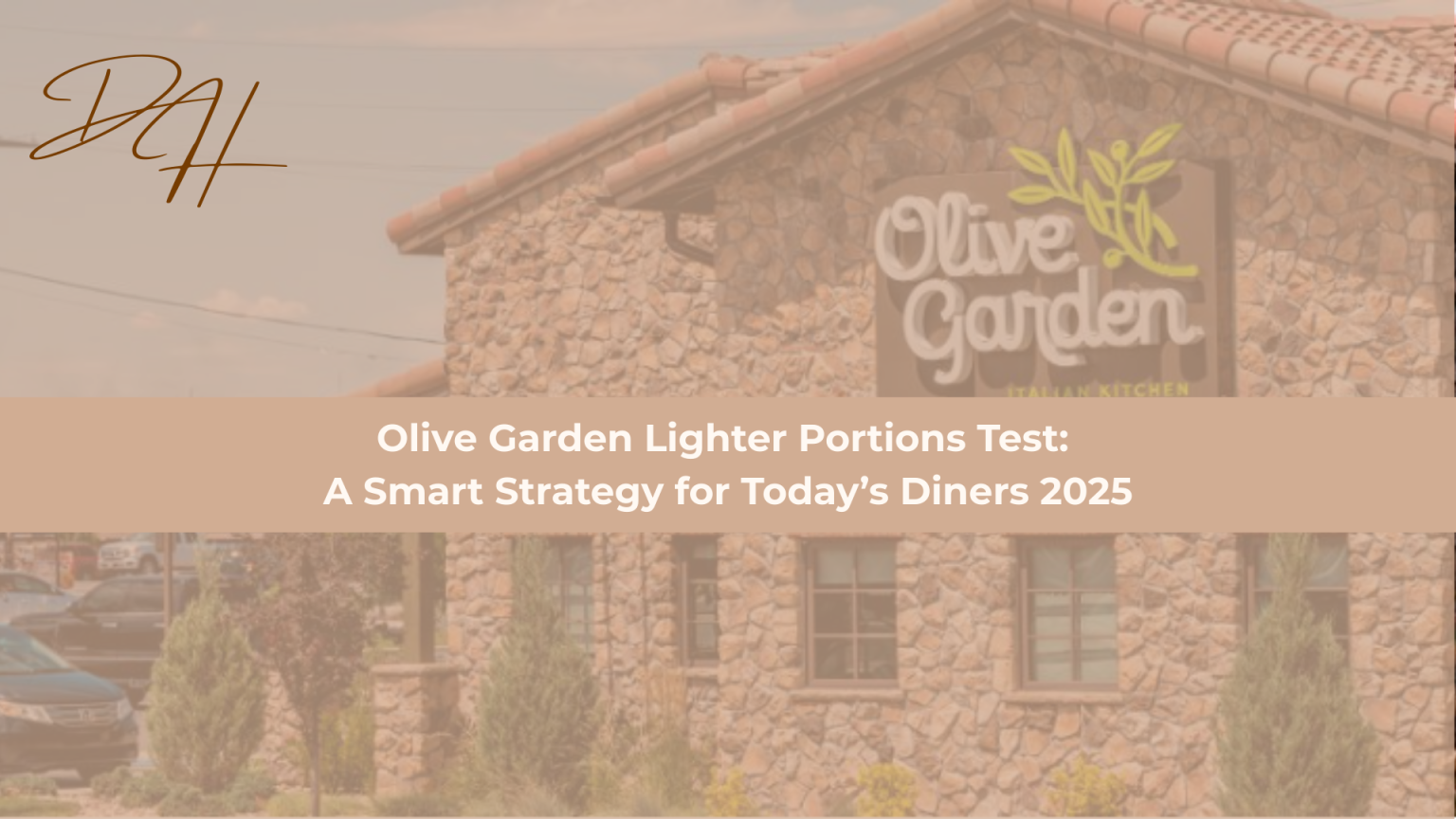Having worked at Olive Garden in the early 2000s, I saw firsthand how portion size, guest expectations, and menu design intersect. The brand’s new test of smaller, more affordable portions provides valuable lessons—not just for casual dining chains, but for any restaurant striving to balance cost, value, and customer satisfaction. So why is Olive Garden Lighter Portions Test happening?
What the Olive Garden Lighter Portions Test Includes
- Olive Garden, part of Darden Restaurants, is currently testing a “lighter portion” menu section in about 40% of its locations. Nation’s Restaurant News+2MarketWatch+2
- The test includes seven existing entrees served in smaller portions, offered at lower prices. These lighter plates still come with unlimited soup or salad and breadsticks. MarketWatch+1
- These lighter-portion meals are available during dinner service and all day on weekends in participating locations. MarketWatch+1
- Early feedback from guests has been positive: affordability scores rose, customer satisfaction with portion size is high, and traffic is up in these locations. Nation’s Restaurant News+1
Why This Matters (And What I’ve Observed Before)
From my time at Olive Garden in the early 2000s, I learned:
- Guests compare value: Even then, customers could sense if a portion felt too small given the price. The feeling of getting “enough” matters.
- Consistency is key: If portion sizes vary widely, guests lose trust.
- Sides and extras matter: Breadsticks, salad, or soup weren’t just filler—they contributed to guest satisfaction even if the entrée was lighter.
The new test leverages these principles: smaller portions with accompanying sides help maintain perceived value.
Benefits & Trade‑Offs
✔ Benefits
- Broader price range: Gives guests more options if they want a lighter, cheaper meal. May attract more frequent visits. Restaurant Dive+1
- Affordability appeal: Particularly in times of inflation, consumers often cut back or become more price sensitive. Offering value choices can retain and lure customers. Nation’s Restaurant News+1
- Potential traffic driver: Olive Garden expects these lighter options to drive more guests over time. Restaurant Dive
⚠ Trade‑Offs
- Lower check averages: If many guests shift from full‑size to lighter meals, revenue per guest may drop. Olive Garden acknowledges this risk. Nation’s Restaurant News+1
- Operational complexity: Two portion sizes for the same entrée mean more prep, portion control, staff training, and inventory considerations.
- Perception issues: Some guests may perceive lighter portions as “cheaper” or less generous. The challenge is maintaining the brand’s image of generosity.
Actionable Takeaways for Other Restaurants
If you’re considering a similar approach, here are steps to consider:
- Pilot carefully: Start in a subset of locations to test demand, feedback, and operational impact (just like Olive Garden is doing).
- Maintain core value elements: Preserve what guests love—sides, ambiance, service—to support the lighter portion so it doesn’t feel like a downgrade.
- Balance pricing strategy: Make sure the reduced‑portion price feels fair and gives the perception of value, even if it means slightly reduced margins.
- Train staff for messaging: Staff should be able to explain the portion options in a positive way (“lighter for those who want it,” not “smaller because we’re cutting corners”).
- Track metrics: Monitor changes in traffic, satisfaction, check averages, repeat visits, and cost of goods sold. These will tell you if the strategy is working.
Final Thoughts
Olive Garden’s test of smaller, more affordable portions is a smart move in a time when diners are budget conscious but still want value. Because I’ve worked in the Olive Garden system before, I know how delicate the balance is between guest expectations and cost control. If executed well, lighter portion options can win both guest satisfaction and business performance.
For restaurants, adapting to what guests want—without losing core brand identity—can be a differentiator. When value, perception, and experience align, lighter‑portion strategies are more than just cost saves—they strengthen loyalty.
Contact Information
Need help designing menu changes, optimizing portion sizes, or recruiting staff for this kind of shift?
Contact DeVita & Hancock Hospitality at www.dhhospitalitygroup.com for your consulting or recruitment needs, or email us at connect@dhhospitalitygroup.com.
For Clover and CardConnect payment solutions, visit: dhhospitalitygroup.com/clover/
